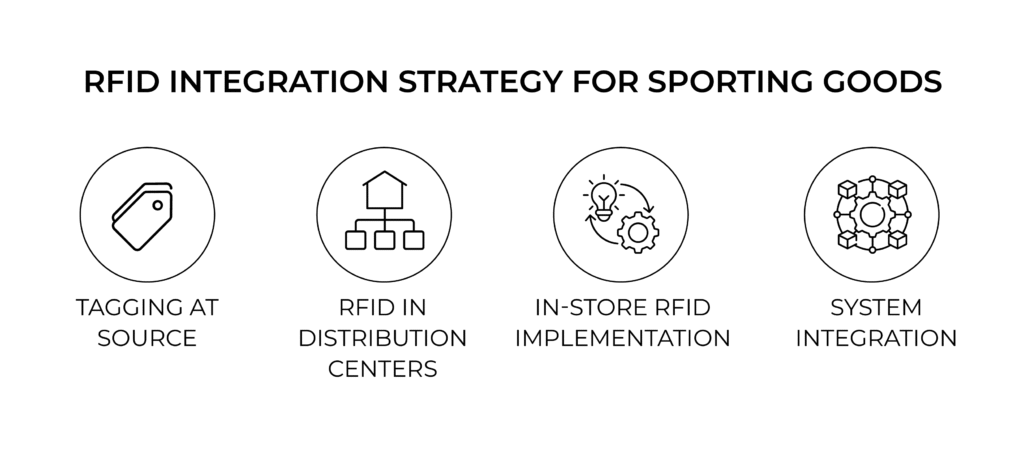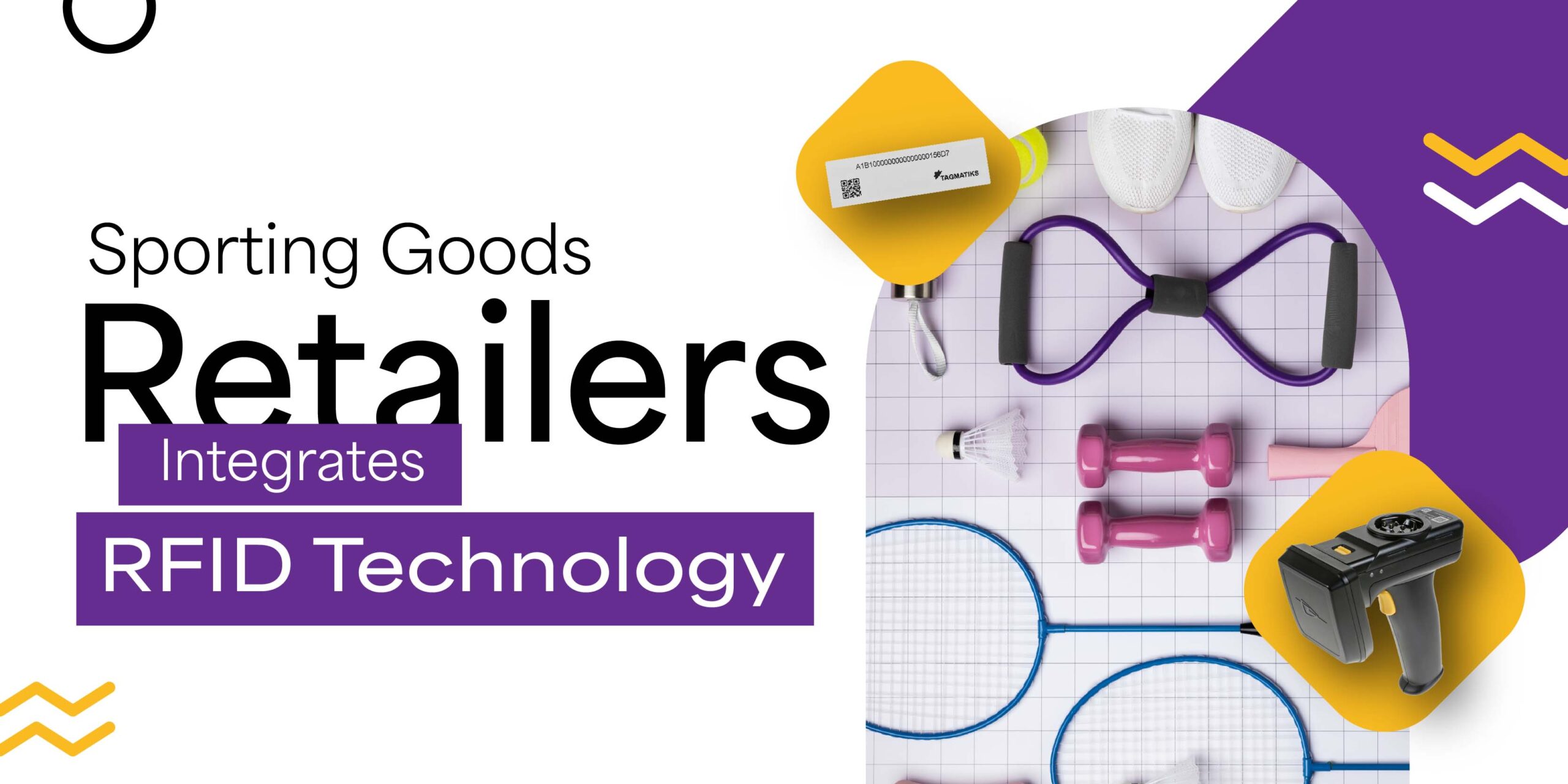Introduction
In today’s hyper-competitive retail landscape, sporting goods retailers face increasing pressure to deliver products quickly, accurately, and cost-effectively. Customer expectations have evolved — real-time inventory visibility, same-day delivery, and seamless omnichannel shopping are no longer luxuries but necessities.
To meet these demands, major sporting goods retailers are turning to Radio Frequency Identification (RFID) to gain greater visibility and control across their entire supply chains. From factories to distribution centers to retail stores, RFID is emerging as a transformational technology — enabling unprecedented inventory accuracy, faster order fulfillment, reduced shrinkage, and smarter decision-making.
This article explores how a sporting goods retailer successfully integrated RFID solutions to overcome critical supply chain issues, including how the system works, key challenges it solved, benefits realized, and the strategic outlook moving forward.
Supply Chain Challenges in Sporting Goods Retail
Sporting goods retailers operate within a highly seasonal, trend-driven environment. Rapidly changing customer preferences and product seasonality — from baseball in the spring to snowboarding in the winter — place unique pressures on supply chain operations.
Here are the top supply chain challenges faced:
Inaccurate Inventory Data
Traditional barcode systems rely heavily on manual scans. These are error-prone, time-consuming and often result in discrepancies between reported and actual inventory levels. Inventory accuracy at retail stores often dips below 70% approx., leading to missed sales opportunities.
Stockouts and Overstocks
Poor visibility across the supply chain leads to suboptimal replenishment decisions. Retailers frequently experience stockouts of fast-moving items (like sneakers or sports jerseys), while slower items languish on shelves or in warehouses — increasing holding costs.
Slow Receiving and Picking Processes
Without real-time automation, warehouse receiving, order picking, and shipping rely on human scanning. This not only slows down operations but also introduces errors that ripple downstream.
High Shrinkage and Theft
Sporting goods — especially branded apparel, high-end equipment, and accessories — are prime targets for theft. Barcode-based systems make it difficult to trace stolen or misplaced inventory.
Limited Omnichannel Capabilities
Modern retail requires accurate, up-to-the-minute visibility for services like BOPIS (Buy Online, Pick Up In-Store), ship-from-store, and same-day delivery. Without real-time inventory tracking, these services are risky and error-prone.
RFID Integration Strategy
To address these challenges, the sporting goods retailer deployed an end-to-end RFID-based solution. This involved tagging products at the source, installing fixed and handheld RFID readers throughout the supply chain, and integrating RFID data with its ERP, WMS, and POS systems.
Tagging at Source
All products — from shoes to gym equipment — were tagged with UHF RFID labels at the point of manufacture. Each tag carries a unique EPC (Electronic Product Code), enabling item-level identification throughout the product lifecycle.
RFID in Distribution Centers
At the warehouse level, fixed RFID portals were installed at dock doors for automated inbound and outbound scanning. RFID-enabled put-away and picking processes
In-Store RFID Implementation
In retail stores, associates used handheld RFID sleds to conduct rapid cycle counts, locate misplaced inventory, and perform item searches. RFID ceiling-mounted antennas enabled real-time shelf monitoring.
System Integration
The RFID data flowed into a centralized software platform integrated with the retailer’s WMS, OMS, and POS systems. Dashboards, analytics tools, and alerts enabled proactive decision-making.

How RFID Solved Key Supply Chain Problems
Let’s break down how RFID specifically addressed each of the Sports retailer’s challenges:
Inventory Accuracy Jumped to 98%+
RFID enabled frequent and near-instantaneous inventory cycle counts without line-of-sight scanning. Associates could scan thousands of items in minutes, dramatically improving stock accuracy and reducing discrepancies.
Reduction in Stockouts and Overstocks
Real-time inventory visibility across all nodes — warehouses, stores, and in-transit — allowed planners to make informed restocking decisions. The retailer implemented automated replenishment triggers based on RFID data.
Receiving Time Cut by 60%
With RFID portals, incoming shipments were automatically verified in seconds — no manual barcode scanning required. Errors in received quantities were immediately flagged, and discrepancies were resolved faster.
Theft and Shrinkage Reduce
Because every product could be tracked at the item level, missing or stolen goods were quickly identified. The visibility discouraged internal theft and improved accountability across the organization.
Omnichannel Fulfillment Enabled
RFID allowed the retailer to know precisely which items were available in-store or in backstock. This enabled accurate execution of online orders fulfilled from store locations — a capability previously unmanageable.
RFID Hardware and Software Stack
Here’s an overview of the technology stack used:
Hardware
- RFID Tags: Passive UHF EPC Gen 2 tags with a read range of up to 10 meters
- Handheld Readers: Zebra RFD40 sleds with Android mobile devices
- Fixed Readers: Impinj Speedway R420 at dock doors and ceilings
- RFID Portals: Custom-built portals for automated check-in/check-out at warehouses
Software
- RFID Middleware: Software to aggregate, filter, and transmit RFID reads
- RFID Inventory Software: A custom dashboard showing item location, inventory is all you can see in Tagmatiks Retail RFID Software.
The initial investment in RFID includes hardware, software, and services.
- Reduced labor costs
- Increased sales from fewer stockouts
- Lower shrinkage
- Improved omnichannel efficiency
Footwear Category Transformation
In the footwear category, traditionally plagued by stockouts and returns due to mismatched sizes.
Using RFID:
- Each shoe box was tagged with a unique identifier.
- Shelf-level antennas provided real-time tracking of SKUs.
- Associates could instantly locate a missing size in backstock.
- Online customers could see real-time availability by size and store
As a result: When you use RFID in your business,
- In-store fulfillment speed increased
- Online-to-offline order accuracy improved.
- Footwear sales rose 15% year-over-year
Employee and Customer Experience
Store Associates:
- Empowered with RFID handhelds, associates were more efficient
- Reduced frustration from hunting down misplaced inventory
- Increased time spent assisting customers instead of counting inventory
Customers:
- Found the products they wanted, when they wanted
- Benefited from faster pickup, accurate orders, and fewer returns
- Gained access to real-time availability via the website and mobile app
Challenges Faced During RFID Implementation
Despite the benefits, the retailer encountered several hurdles:
Change Management
Training store and warehouse staff on RFID workflows took time. Resistance to change was mitigated with hands-on workshops and incentives.
Data Quality
Initial integration required significant data cleanup (e.g., standardizing SKUs and attributes). RFID relies on accurate backend data.
Tagging Compliance
Working with suppliers to ensure consistent, high-quality tagging at the source was essential. Vendor onboarding required clear guidelines and audits.
Infrastructure Investments
Upfront costs for RFID readers, antennas, and portals were significant. The ROI took time but was ultimately justified.
Strategic Outlook and Future Plans
With RFID successfully deployed, the retailer is expanding its use cases:
- Smart Fitting Rooms: Interactive mirrors that identify products via RFID and suggest matching items
- Automated Checkout: RFID readers at the exit to enable grab-and-go checkout
- AI-Driven Demand Forecasting: Using RFID data for predictive analytics to optimize inventory planning
- Returns Optimization: Streamlining reverse logistics by tracking returned items in real time
The long-term vision is to create a fully transparent, responsive, and intelligent supply chain powered by real-time item-level data.
Conclusion
For sporting goods retailers navigating an increasingly complex retail environment, RFID is proving to be a game-changer. By delivering real-time visibility, reducing errors, and enabling smarter operations, RFID empowers retailers to stay competitive and responsive to consumer needs.
The success of this implementation showcases not only the tangible benefits of RFID but also the strategic importance of investing in supply chain modernization. As the technology matures and costs continue to decline, RFID is poised to become a foundational element of next-generation retail supply chains.
